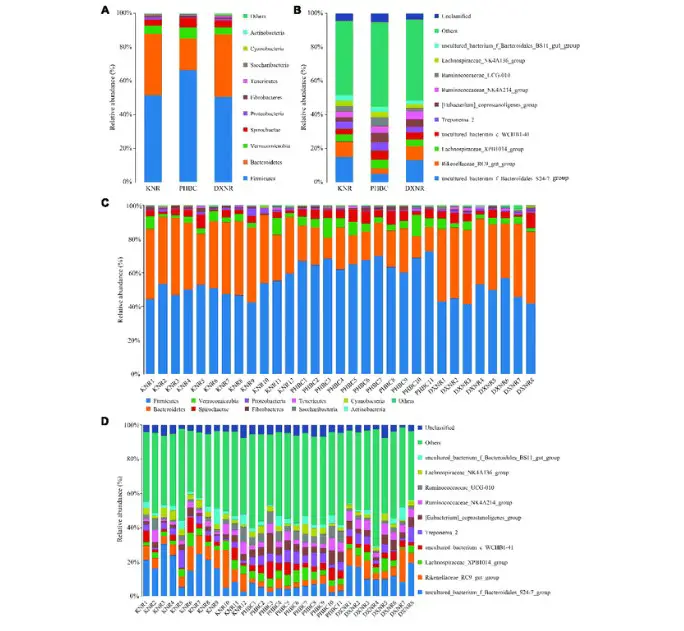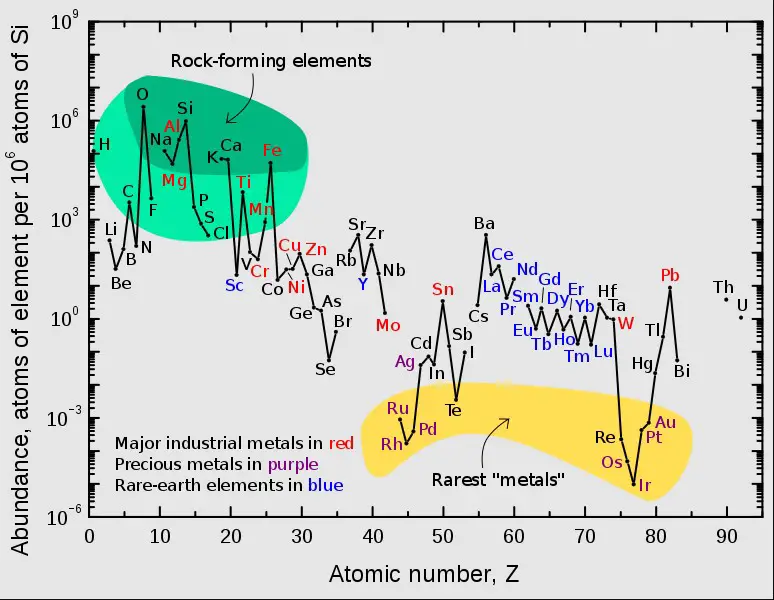Atoms, the fundamental building blocks of matter, come in various forms called isotopes, distinguished by their number of neutrons. The diversity of these isotopic forms plays a crucial role in many scientific disciplines, from chemistry to environmental science. Understanding the nuances of isotopic composition, specifically through concepts like percent abundance and relative abundance, provides insights into the natural world, from the age of rocks to the health of ecosystems.
Percent abundance refers to the fraction of a particular isotope present in a natural sample of an element, expressed as a percentage. Relative abundance, on the other hand, involves comparing the presence of different species or isotopes, often in a non-quantitative way to understand their distribution or dominance in a specific context. These concepts, though seemingly straightforward, unravel the complexity of nature’s isotopic diversity and its implications across various fields.
The significance of percent and relative abundance extends beyond academic curiosity. These measures are indispensable tools in environmental monitoring, archaeological dating, and even in the medical and manufacturing industries. They help scientists and researchers decode historical climatic conditions, trace the origins of materials, and monitor biodiversity, showcasing the intricate interplay between isotopic composition and the world around us.

Percent Abundance
Definition and Explanation
Percent abundance is a term used to describe the proportion of a specific isotope of an element compared to all isotopes of that element present in a sample. This measure is critical in fields like chemistry, physics, and environmental science, as it offers insights into the composition of materials and natural resources. In simpler terms, it tells us how much of an element’s total mass is made up by a particular isotope, expressed as a percentage.
Calculation Methods
Calculating percent abundance involves a few straightforward steps. Here’s how it’s typically done:
- Identify the isotopes: Know the isotopes of the element in the sample.
- Measure the masses: Determine the mass of each isotope present.
- Total mass calculation: Sum up the masses of all isotopes to find the total mass of the element in the sample.
- Calculate the percent abundance: For each isotope, divide its mass by the total mass of the element, then multiply by 100 to get its percent abundance.
This calculation gives a clear picture of how prevalent each isotope is within a sample, allowing for comparisons and further analyses.
Examples in Nature
Nature offers countless examples of percent abundance at play. For instance:
- Oxygen isotopes in water: Earth’s water contains mainly oxygen-16, but also traces of oxygen-17 and oxygen-18. The percent abundance of these isotopes can tell us about temperature changes in ancient climates.
- Carbon isotopes in organic materials: Carbon-12 and carbon-13 are naturally occurring isotopes. Their percent abundance in organic materials, like fossil fuels, provides information on source materials and photosynthesis processes.
Relative Abundance
Definition and Explanation
Relative abundance, unlike percent abundance, measures the proportion of a species or isotope compared to the total number of species or isotopes in a given context. It’s more qualitative, focusing on distribution patterns rather than precise quantities. This concept is pivotal in ecology and biodiversity studies, where it helps assess the health and composition of ecosystems.
How It Differs From Percent Abundance
While both measures provide insight into abundance, they serve different purposes:
- Percent abundance is quantitative, focusing on how much of a sample is made up by a specific isotope.
- Relative abundance gives a broader picture of how a species or isotope compares to others in a given setting, emphasizing distribution and dominance rather than exact percentages.
This distinction is crucial for scientists and researchers when choosing a method to analyze samples or data.
Role in Environmental Studies
In environmental science, relative abundance is a tool for understanding ecosystems. It helps in:
- Biodiversity assessments: Estimating the variety of species in an area.
- Ecological health monitoring: Tracking changes in species populations over time to identify impacts of environmental changes or human activity.
This approach allows for a nuanced understanding of ecological dynamics and conservation needs.
Key Differences
To summarize, here are the key differences between percent abundance and relative abundance:
- Quantitative vs. Qualitative: Percent abundance offers a precise measurement, while relative abundance provides a comparative overview.
- Specific Isotopes vs. Species/Isotopes: Percent abundance applies to isotopes of elements, and relative abundance to broader categories, including species.
- Application Areas: Percent abundance is critical in chemistry and physics, whereas relative abundance is more aligned with ecology and environmental science.
Comparative Analysis
| Feature | Percent Abundance | Relative Abundance |
|---|---|---|
| Nature | Quantitative | Qualitative |
| Focus | Proportion of a specific isotope | Comparison of species/isotopes |
| Main Application | Chemistry, Physics | Ecology, Environmental Science |
| Importance | Material composition, Isotopic analysis | Biodiversity, Ecosystem health |
Through this comparative lens, it’s clear that percent abundance and relative abundance cater to different scientific needs and objectives, each offering unique insights into the natural world.

Applications
Scientific Research
In Isotopic Analysis
Isotopic analysis is a cornerstone of modern scientific research, where the percent abundance of isotopes provides essential data. This technique is used across disciplines:
- Archaeology: By analyzing isotopic compositions, researchers can determine the diets of ancient populations or the origins of artifacts.
- Geology: Isotopic ratios in rocks and minerals offer clues to the Earth’s formation and the timing of geological events.
In these contexts, understanding the percent abundance of specific isotopes allows scientists to piece together historical puzzles and gain insights into past climates and ecosystems.
Tracing Chemical Pathways
Tracing chemical pathways is another critical application of isotopic analysis. By studying the changes in isotopic composition of substances as they undergo chemical reactions, researchers can:
- Track pollution sources: Identify the origins of pollutants in the environment.
- Understand metabolic processes: Explore how organisms metabolize various substances.
This tracking relies heavily on knowing the percent abundance of isotopes within different components of a pathway, shedding light on complex biochemical and environmental processes.
Environmental Science
Monitoring Biodiversity
In environmental science, relative abundance plays a vital role in monitoring biodiversity. By comparing the presence and prevalence of species within an ecosystem, scientists can:
- Identify key species: Determine which species are crucial for ecosystem stability.
- Detect shifts in populations: Early warnings of environmental change or degradation.
Such monitoring efforts are crucial for conservation planning and ecosystem management, making relative abundance an invaluable tool in environmental protection.
Assessing Ecosystem Health
Assessing ecosystem health often involves analyzing both percent and relative abundance. This dual approach helps scientists:
- Evaluate pollution impacts: Changes in isotopic composition can indicate contamination levels and sources.
- Monitor species health: Variations in relative abundance can signal alterations in habitat quality or disease outbreaks.
Through these measures, environmental scientists can provide a comprehensive picture of an ecosystem’s condition, guiding efforts to maintain or restore natural habitats.
Industry
Material Sourcing
In industries ranging from jewelry making to electronics manufacturing, knowing the percent abundance of elements can significantly affect material sourcing decisions. For example:
- Precious metals: The isotopic composition can affect material value and sourcing ethics.
- Electronic components: Isotopic purity can influence the performance of semiconductors and other critical components.
Companies use isotopic analysis to ensure their materials meet strict standards for quality and sustainability, highlighting the practical importance of percent abundance in industrial contexts.
Quality Control in Manufacturing
Quality control is another area where isotopic and relative abundance measurements are crucial. In manufacturing processes, these analyses help ensure product consistency and safety by:
- Detecting impurities: Identifying unwanted isotopic variations in raw materials.
- Ensuring product specifications: Verifying that products meet the required standards.
This meticulous attention to isotopic detail underscores the role of abundance measures in maintaining high-quality manufacturing standards.
Case Studies
Isotopic Dating
One of the most well-known applications of percent abundance is in isotopic dating, particularly in determining the geological age of materials. This method relies on the decay rates of radioactive isotopes, such as Uranium-238 to Lead-206, to estimate the age of rocks and fossils. Key steps include:
- Measuring isotopic ratios: The percent abundance of parent and daughter isotopes in a sample is determined.
- Calculating decay rates: Scientists use known decay rates to back-calculate the time required for the observed isotopic ratios to form.
This process allows geologists to construct timelines of Earth’s history, dating events millions or even billions of years ago.
Biodiversity Monitoring
A compelling example of using relative abundance in species population studies is the Great Barrier Reef monitoring. Scientists assess the health and biodiversity of this ecosystem by examining the relative abundance of marine species, including corals, fishes, and invertebrates. This involves:
- Surveying species: Collecting data on the presence and abundance of different species across various reef locations.
- Analyzing trends: Comparing current data with historical records to identify changes in biodiversity.
Such studies are critical for conservation efforts, helping to pinpoint areas of concern and inform strategies to protect this natural wonder.
FAQs
How is percent abundance calculated?
Percent abundance is calculated by dividing the amount of a specific isotope by the total amount of all isotopes of that element present in a sample, then multiplying by 100 to convert it to a percentage. This calculation offers a quantifiable measure of an isotope’s presence in a given sample, crucial for various scientific analyses.
Why is relative abundance important in environmental studies?
Relative abundance provides vital insights into the health and dynamics of ecosystems. By comparing the abundance of species or isotopes within an environment, scientists can gauge biodiversity, track changes over time, and assess the impact of human activity or natural events on ecological balance, guiding conservation efforts.
Can percent and relative abundance affect isotopic dating methods?
Yes, isotopic dating methods rely heavily on percent abundance measurements of certain isotopes, such as carbon-14 or uranium-238, to estimate the age of archaeological finds or geological formations. Variations in percent abundance can influence the accuracy of dating, highlighting the importance of precise measurements and calibrations in chronological studies.
How do industries use these concepts?
Industries apply percent and relative abundance to ensure material purity, trace source materials, and monitor production processes. For example, in the pharmaceutical industry, understanding isotopic composition can help in identifying the origin of raw materials, ensuring drug safety and efficacy.
Conclusion
Percent abundance and relative abundance serve as key concepts in bridging the microscopic world of isotopes with the macroscopic phenomena around us. Their applications span across disciplines, illustrating the interconnectedness of scientific inquiry and real-world challenges. By quantifying the presence of specific isotopes or comparing the distribution of species, these measures offer invaluable insights into the past, present, and future of our planet.
Understanding these concepts enriches our comprehension of the natural and engineered world, fostering advancements in technology, conservation, and science at large. As we continue to explore and question, percent and relative abundance will remain essential tools in the endless quest for knowledge, highlighting the beauty and complexity of the universe from the atomic level to the expanse of ecosystems.

